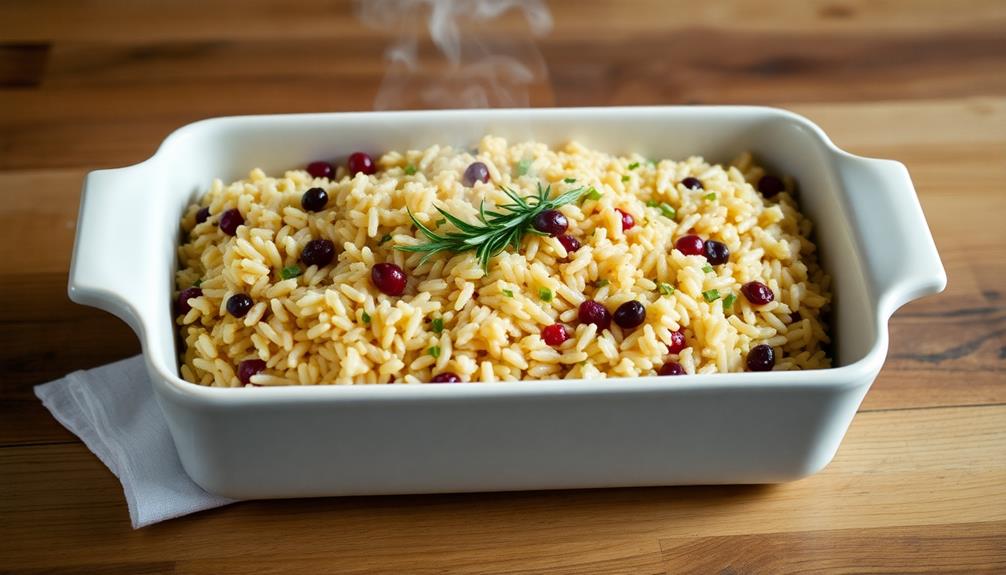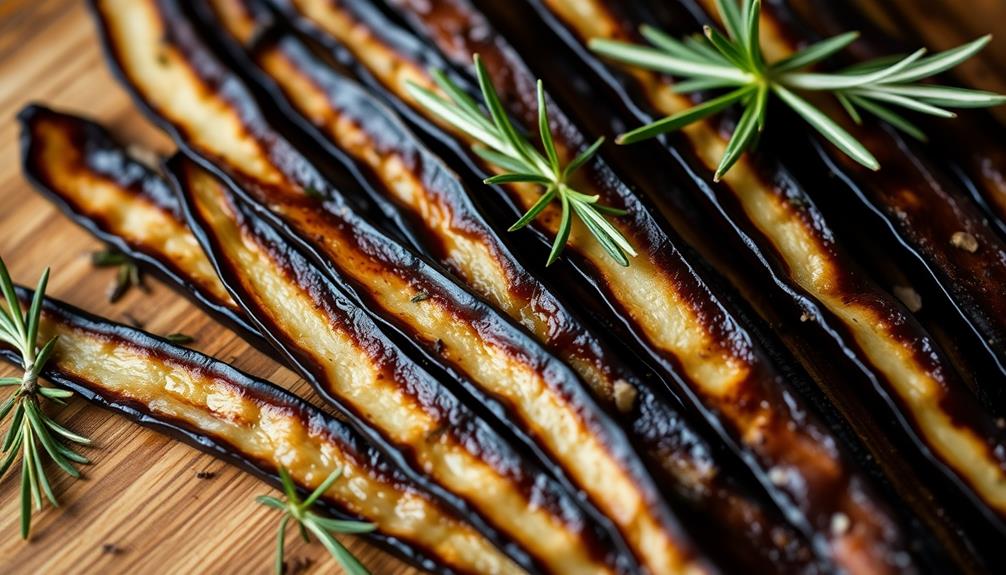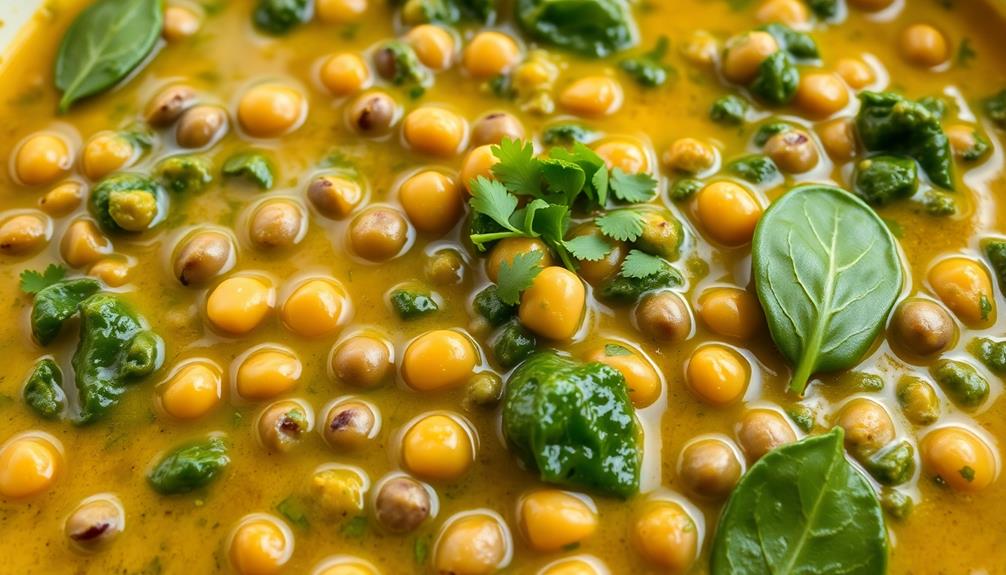Jackfruit is a versatile meat alternative you’ve got to try if you’re a vegetarian or vegan. Originating in India, this nutrient-packed fruit can mimic the texture and flavor of pulled pork or shredded chicken. It’s easy to season and cook in various ways, making it a perfect substitute in all sorts of savory dishes. Beyond its culinary versatility, jackfruit is an environmentally-friendly option that reduces your reliance on animal proteins. As you’ll discover, this fruit’s global popularity continues to grow, with good reason – it’s a tasty and sustainable addition to any plant-based diet.
Key Takeaways
- Jackfruit is a versatile plant-based alternative to meat, offering a similar texture and flavor profile that appeals to both vegetarians and meat-eaters alike.
- Nutritionally, jackfruit is packed with essential vitamins, minerals, and fiber, making it a healthy and sustainable option for those seeking to reduce their meat consumption.
- Jackfruit can be prepared in various ways, including sautéing, baking, or grilling, and can be easily seasoned to absorb a variety of flavors for use in diverse dishes.
- The increasing global demand for plant-based alternatives has led to a rise in the popularity of jackfruit, which is now widely available in grocery stores and featured in vegetarian and vegan recipes.
- Incorporating jackfruit into one’s diet not only reduces reliance on animal proteins but also helps to lower the carbon footprint and supports sustainable agricultural practices.
History
Originating in the Indian subcontinent, the jackfruit has a long and storied history. You’ll find it’s been cultivated for centuries, with records dating back to the 6th century AD. Over time, this remarkable fruit has spread throughout Southeast Asia, becoming a dietary staple in many regions.
Interestingly, the jackfruit’s versatility has contributed to its enduring popularity. You can eat it at various stages of ripeness – young, ripe, or even the seeds. This adaptability has allowed the jackfruit to thrive in diverse climates and culinary traditions. As a result, it’s become an integral part of the cultural identity in many Asian countries.
Today, the jackfruit is experiencing a surge of global interest, particularly among vegetarians and vegans seeking meat alternatives. Its ability to mimic the texture and flavor of pulled pork or chicken has made it a darling of the plant-based movement.
The jackfruit’s rise to prominence is a testament to its enduring appeal and the adaptability that has defined its history.
Recipe
Jackfruit is a versatile fruit that can be used as a meat alternative in many vegetarian and vegan dishes. When cooked properly, it can mimic the texture and flavor of pulled pork or shredded chicken, making it a popular choice for those looking to reduce their meat consumption.
This recipe showcases how to prepare jackfruit in a delicious and satisfying way. By slow-cooking the jackfruit and seasoning it with savory spices, you can create a dish that’s both flavorful and hearty.
- 2 cans of young green jackfruit, drained and shredded
- 1 onion, diced
- 3 cloves of garlic, minced
- 1 tablespoon of olive oil
- 1 teaspoon of smoked paprika
- 1 teaspoon of cumin
- 1 teaspoon of chili powder
- 1 teaspoon of dried oregano
- 1 cup of vegetable broth
- Salt and pepper to taste
In a large skillet, sauté the onion and garlic in olive oil over medium heat until translucent. Add the shredded jackfruit, smoked paprika, cumin, chili powder, and dried oregano. Stir to coat the jackfruit with the spices.
Pour in the vegetable broth and bring the mixture to a simmer. Reduce heat to low and let the jackfruit simmer for 30-40 minutes, stirring occasionally, until the jackfruit is tender and has absorbed the flavors of the seasonings. Season with salt and pepper to taste.
When cooking with jackfruit, it’s important to use young, green jackfruit, as the mature, ripe fruit has a very different texture and flavor profile. Additionally, be sure to shred the jackfruit thoroughly to achieve the desired pulled meat-like texture.
Serve the jackfruit as a main dish or in tacos, sandwiches, or on top of salads for a delicious and satisfying meat-free meal.
Cooking Steps
First, soak the jackfruit in water overnight to soften it.
Next, drain and shred the jackfruit.
Then, sauté the shredded jackfruit, add your desired seasonings, and serve the flavorful result.
Step 1. Soak Jackfruit in Water Overnight

Before you can begin cooking with jackfruit, you’ll need to soak it in water overnight. This step is crucial, as it helps to rehydrate the fruit and soften its texture.
Start by placing the jackfruit pieces in a large bowl or container, then cover them completely with water. Let the jackfruit soak for at least 8 hours, or overnight, ensuring it’s fully submerged the entire time.
Once the soaking time is up, drain the jackfruit and give it a gentle rinse under running water. The fruit should now be pliable and ready for the next stage of preparation.
Discard the water used for soaking, as it may have developed an unpleasant odor during the process. With the jackfruit properly softened, you can now proceed to shredding, seasoning, and cooking it according to your desired recipe.
This simple yet essential step sets the stage for transforming jackfruit into a delicious, meat-like substitute.
Step 2. Drain and Shred Jackfruit
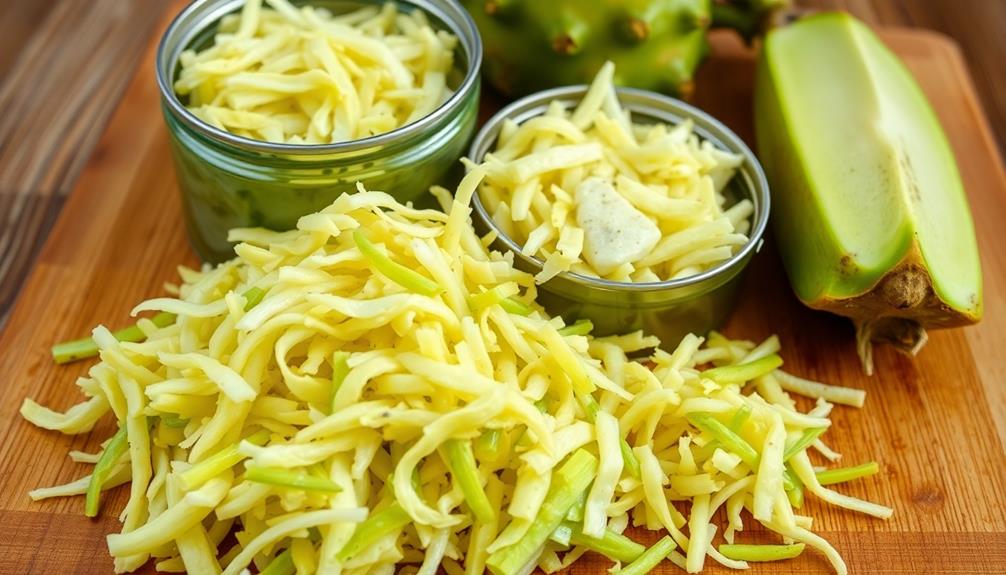
After draining the soaked jackfruit, you’ll want to give it a gentle rinse under running water. This will help remove any residual brine or impurities.
Once rinsed, transfer the jackfruit to a clean work surface. Using your hands or a pair of forks, begin shredding the jackfruit into thin, stringy pieces. Work in batches if necessary, ensuring each piece is separated and resembles the texture of pulled pork or chicken.
Aim for consistent shredding to achieve an even, meat-like consistency throughout. As you shred, discard any tough or fibrous cores.
The shredded jackfruit is now ready to be used in your favorite recipes, from tacos and burgers to stir-fries and curries. The key is to treat the jackfruit as you’d any other protein, seasoning and cooking it to your desired doneness.
With its neutral flavor and ability to absorb spices and sauces, jackfruit makes an excellent meat alternative for vegetarians and vegans alike.
Step 3. Sauté the Shredded Jackfruit

With the shredded jackfruit ready, you can now start sautéing it to develop its flavor and texture.
Heat a large skillet over medium-high heat and add a tablespoon or two of oil. Once the oil is hot, add the shredded jackfruit and spread it out in an even layer. Let it sizzle, stirring occasionally, until it starts to brown and crisp up, about 5-7 minutes.
Next, add in any desired seasonings or spices, such as garlic, onion powder, cumin, chili powder, or smoked paprika. Continue sautéing for another 2-3 minutes, allowing the flavors to meld. The jackfruit should now have a meaty, pulled pork-like texture.
For a richer, more savory flavor, you can also add a splash of soy sauce, Worcestershire sauce, or vegetable broth to the pan.
Sauté for an additional minute or two until everything is well combined. Taste and adjust seasonings as needed. The sautéed jackfruit is now ready to use in your favorite vegetarian dishes.
Step 4. Add Seasonings
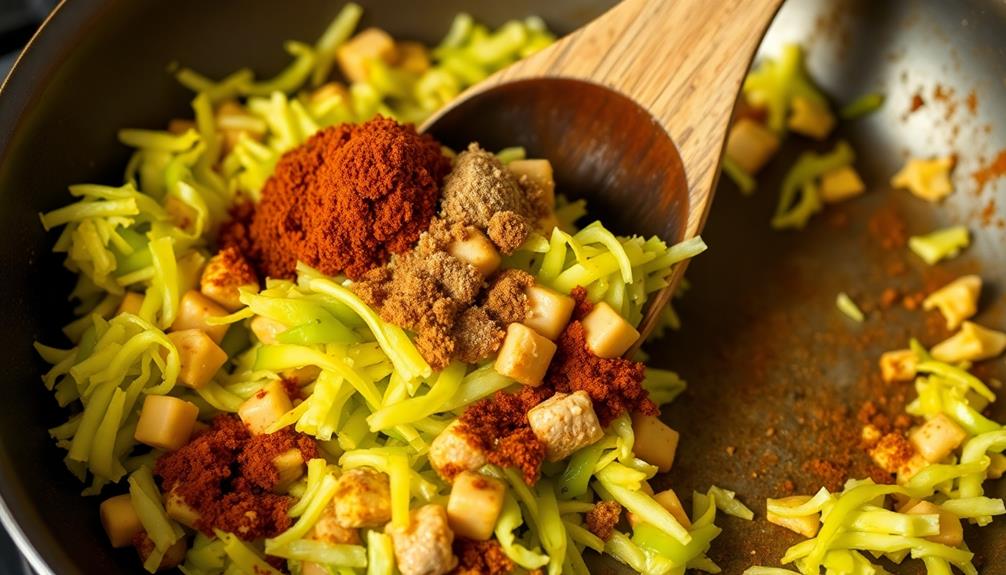
Next, stir in your desired seasonings or spices. This is where you can really make the jackfruit your own. Try adding a blend of garlic powder, onion powder, smoked paprika, chili powder, and a pinch of salt and pepper. The smoky, savory flavors will complement the jackfruit perfectly.
For a little extra zing, you can also squeeze in some fresh lemon or lime juice.
Don’t be afraid to experiment with different herb and spice combinations. Cumin, coriander, and cinnamon work well for a more Middle Eastern-inspired dish. Or, if you’re going for a Mexican-style flavor, mix in some cumin, chili powder, and oregano. The key is to taste as you go and adjust the seasonings to your liking.
Once you’ve added your desired seasonings, give the jackfruit a good stir to ensure the flavors are evenly distributed. Now, your jackfruit is ready to be transformed into a delicious, meat-free meal.
Step 5. Serve the Seasoned Jackfruit

Once the jackfruit is seasoned to your liking, you can start transforming it into a mouthwatering dish.
Begin by heating a large skillet over medium-high heat and adding a drizzle of oil. Gently place the seasoned jackfruit pieces into the hot pan, ensuring they don’t overcrowd. Sear the jackfruit, flipping occasionally, until it develops a nice golden-brown crust, about 5-7 minutes.
Next, you can opt to add any additional ingredients you desire, such as sautéed onions, garlic, or your favorite vegetables. These will complement the jackfruit’s flavor and texture.
Continue cooking the mixture, stirring frequently, until everything is heated through and the vegetables are tender, approximately 5 more minutes.
Final Thoughts
Though often overlooked, jackfruit’s versatility as a meat alternative deserves further exploration. Packed with nutrients and boasting a meaty texture, this tropical fruit can seamlessly replace conventional proteins in a variety of dishes.
From savory pulled “pork” to spicy “crab” cakes, the culinary possibilities are endless.
Don’t let jackfruit’s unfamiliarity deter you – it’s remarkably easy to work with. Simply season it to your liking, then sauté, bake, or grill it to perfection.
The results will surprise and delight even the most ardent carnivores. Incorporating jackfruit into your meals is a simple way to reduce your environmental impact while enjoying delicious, plant-based fare.
Frequently Asked Questions
Is Jackfruit a Fruit or a Vegetable?
Jackfruit is a fruit, not a vegetable. It’s a large, tropical fruit with a distinctive spiky exterior and a sweet, fibrous interior. Though sometimes used as a meat alternative, it’s botanically classified as a fruit.
How Does Jackfruit Compare to Other Meat Alternatives?
Compared to other meat alternatives, jackfruit offers a unique texture and flavor profile. It’s more fibrous and hearty than tofu or tempeh, making it a satisfying plant-based option for those looking to reduce their meat consumption.
What Are the Nutritional Benefits of Eating Jackfruit?
The nutritional benefits of eating jackfruit are impressive. It’s high in fiber, vitamins, and minerals, and it’s a great source of antioxidants. Plus, it’s low in calories and has no cholesterol, making it a healthy alternative to traditional meat.
Can Jackfruit Be Used in Desserts?
Yes, you can absolutely use jackfruit in desserts! Its versatile texture and mild flavor make it a great ingredient for pies, cakes, and even ice cream. Give it a try for a delicious, plant-based sweet treat.
Where Can I Find Fresh Jackfruit?
You can find fresh jackfruit at Asian grocery stores, international markets, or specialty produce shops. It’s often available in tropical regions, so check your local fruit and vegetable vendors too.

